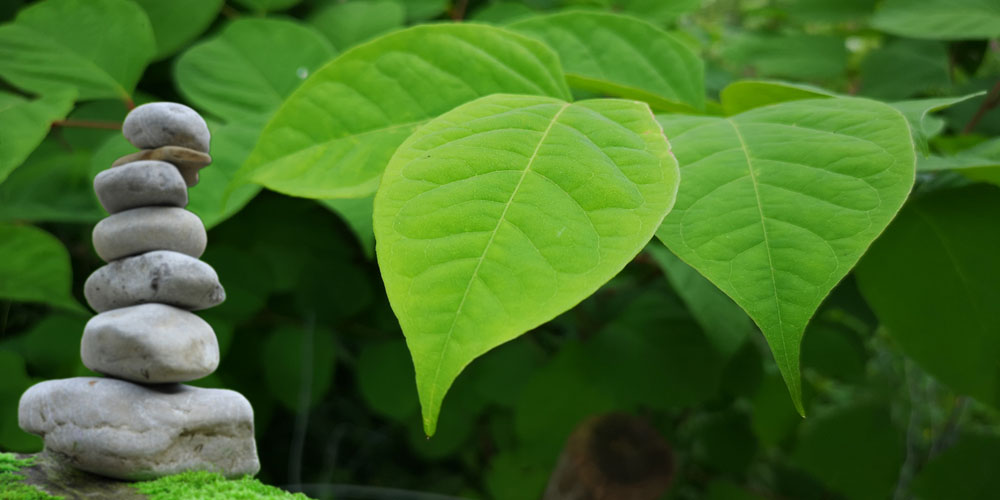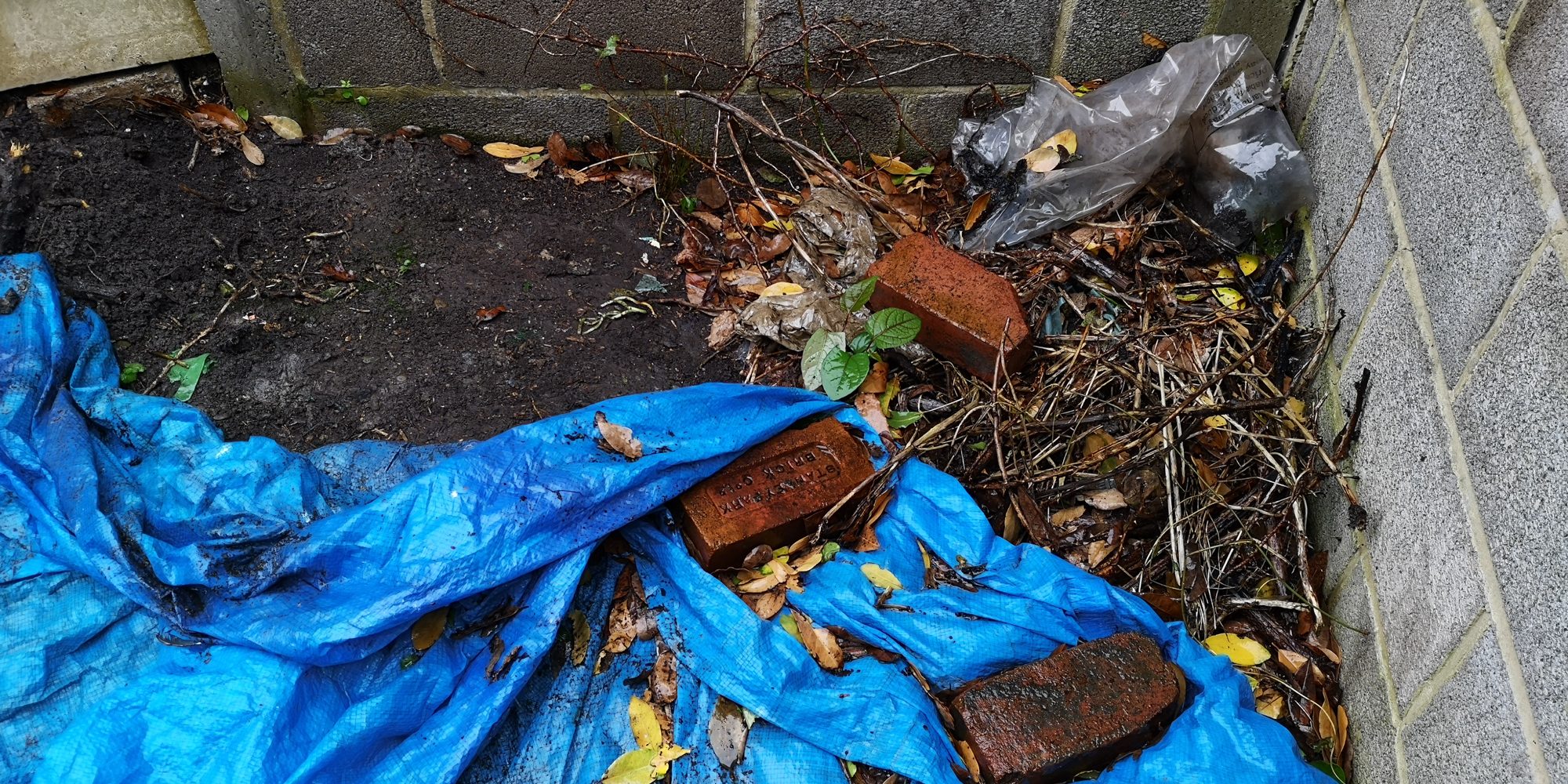This is a list of ways NOT to treat, or try and hide, Japanese Knotweed and the associated reasons why.
(All these tips are taken from real world examples that we have encountered while treating Japanese Knotweed.)
• Chuck some diesel on it:
Please see our separate blog post on this frankly toxic approach!
• Mow or Strim it:
This will just make it worse. If you cut down the above ground plant, you will not kill the below ground roots and rhizomes. Also, if you get any bits of root, as little as 0.7 grammes, you stand a pretty good chance of spreading it further.
• Cover it in gravel, chippings or bark:
This will give you a lovely bed of gravel, with new Japanese Knotweed growing through it next year. Even if you put DPM (membrane) or similar down first, it will come up around the edges or through small cuts in the membrane. You have to treat the rhizomes below ground.
• Tarmac over it:
Simply covering up the problem will not work. You may hide it successfully for a season, but next year, or the year after if you’re very lucky or the tarmac is particularly thick, the Japanese Knotweed will come peeking out of any cracks, eventually causing lift and heave to the area. The result will be you have to un-tarmac it and treat it properly, so you may as well just do this in the first place and save yourself a headache.
• Concrete over it:
Pretty much the same situation as the tarmac approach. It will find it’s way through the tiniest of cracks, cause structural damage and result in the whole thing having to be dug out so you can treat it properly.
• Build an extension over it:
Yes, this has happened. Two years into a 5 year Management Plan, that was actually going pretty well, we turned up to do a treatment and… there was no Japanese Knotweed, because there was no longer a garden, but a 2 story extension with a concrete (see above) apron covering the rest of the “garden”.
Good luck when the Japanese Knotweed starts to come up through the kitchen floor on the inside!
(You CAN build over areas once they have been properly treated/excavated, but in this example the builders where NOT following the script.)
• Landscape or dig it over:
Once treatment is completed, some residual but non-viable rhizome may remain in the ground, but is too far down to become viable, due to lack of light, air and water. However, if the area is then dug up, you stand a pretty good chance of reinvigorating the dormant rhizome by giving it access to the things it needs to grow.
Always discuss your future plans for the affected area with your Japanese Knotweed specialists BEFORE you start a treatment plan, so that you get the right methodology for the specific needs of the site.
• Dig it out and dump it/take it to the tip:
No. All of the above are illegal, unless you are a licensed waste carrier transporting the non-hazardous controlled waste to a licensed landfill site. Dumping or fly-tipping is also very illegal, so don’t. The only people who should excavate Japanese Knotweed are qualified contractors working in conjunction with licensed waste contractors.
• Cut it to the ground, put stuff over it or otherwise try and disguise it:
This doesn’t work. We can spot it even if this happens. You can’t hide the root crowns and it will just come back in the next growing season. It is also illegal to not declare or try to hide the presence of Japanese Knotweed from potential buyers if you are selling a property.
With Japanese Knotweed you must treat the plant above ground in order to remediate the rhizome below ground. That is why our motto at Zen Knotweed is “As Above, So Below“.
As always, the only sure fire way to successfully deal with this amazingly resilient plant is to call the experts and get it sorted properly!


